Corrosion Fatigue Degradation Characteristics of Galvanized and Galfan High-Strength Steel Wire
Abstract
:1. Introduction
2. Accelerated Corrosion Experiment
2.1. Specimens of High-Strength Steel Wire
2.2. Test Device and Accelerated Corrosion Medium
3. Corrosion Phenomenon
4. Corrosion Process
4.1. Uniform Corrosion
4.2. Pitting Corrosion
5. Corrosion Fatigue of High-Strength Steel Wire
5.1. Corrosion Fatigue Degradation Model
5.2. Protype Bridge and Traffic Load
5.3. Numerical Analysis
6. Conclusions
- (1)
- The macro morphology of the corrosion of high-strength steel wire had obvious stage change characteristics. At the early stage of corrosion, the steel wire coating could effectively protect the iron matrix, and the corrosion products were free of Fe oxides. When the corrosion developed to a certain stage, brown corrosion products began to appear; on the galvanized steel wire at 386 h and on the Galfan steel wire at 1016 h. The surface coating began to be consumed, and the steel wire Fe matrix started to corrode. At this time, the steel wire surface a reddish brown rust appeared. The corrosion of steel wire can be generally divided into two parts. The first part is the corrosion of the surface coating. When the corrosion depth exceeds the coating thickness, corrosion of the second part of the steel wire matrix starts. After the corrosion products are removed, uneven pits appeared on the steel wire surface. The corrosion resistance of Galfan steel wire is obviously better than that of galvanized steel wire.
- (2)
- The development law of steel wire corrosion depth was fitted and analyzed. In addition, a uniform corrosion development model and pitting corrosion probability model of galvanized and Galfan steel wire were established. With the extension of corrosion time, the uniform corrosion depth of zinc coating and Galfan coating conformed to the exponential increase trend. The development trend of the two coatings was similar, and the corrosion rate gradually slowed down with the increase of time. The corrosion coefficient of galvanized steel wire conformed to normal random distribution, whereas that of Galfan steel wire conformed to Cauchy distribution. The section distribution of the maximum pitting coefficient did not reject the Gumbel distribution. The location and scale parameters of the maximum pitting coefficient distribution in the two coating intervals showed an exponential downward trend with the increase of corrosion duration.
- (3)
- The early rate of uniform corrosion and pitting corrosion was fast, and then it decreased rapidly, whereas the crack growth rate gradually increased. With the increase of time, the rate increased. The average value of the overall crack depth of the steel wire also increased, and the development rate continued to increase. The STD value of the crack distribution in the late service period was large, and the discreteness of the steel wire life became obvious. Based on the analysis of the corrosion fatigue history of steel wire under different strength traffic loads, the corrosion characteristics of steel wire was the main factor affecting its service life when the traffic strength level was low. The average service life of Galfan steel wire was significantly higher than that of galvanized steel wire. However, under a dense traffic flow with high strength, the service life of steel wire was mainly controlled by the traffic load, and the service life of Galfan steel wire increased slightly. Effective anti-corrosion measures are the key to improving the service life of steel wire.
Author Contributions
Funding
Data Availability Statement
Conflicts of Interest
References
- Meng, E.C.; Yao, G.W.; Yu, Y.L.; Gu, L.F.; Zhong, L. Influence factor analysis on the mechanical behavior of Galvanized steel wire under service environment. J. Build. Mater. 2020, 23, 934–940. [Google Scholar]
- Liu, X.; Zhang, W.; Sun, P.; Liu, M. Time-Dependent Seismic Fragility of Typical Concrete Girder Bridges under Chloride-Induced Corrosion. Materials 2022, 15, 5020. [Google Scholar] [CrossRef] [PubMed]
- Roffey, P. The Fracture Mechanisms of Main Cable Wires from the Forth Road Suspension. Eng. Fail. Anal. 2013, 31, 430–441. [Google Scholar] [CrossRef]
- Liu, M. Finite element analysis of pitting corrosion on mechanical behavior of E690 steel panel. Anti-Corros. Methods Mater. 2022, 28, 7527–7536. [Google Scholar] [CrossRef]
- Betti, R.; West, A.C.; Vermaas, G.; Cao, Y. Corrosion and Embrittlement in High-Strength Wires of Suspension Bridge Cables. J. Bridg. Eng. 2005, 10, 151–162. [Google Scholar] [CrossRef]
- Nakamura, S.I.; Suzumura, K.; Tarui, T. Mechanical Properties and Remaining Strength of Corroded Bridge Wires. Struct. Eng. Int. 2004, 14, 50–54. [Google Scholar] [CrossRef]
- Nakamura, S.-I.; Suzumura, K. Hydrogen embrittlement and corrosion fatigue of corroded bridge wires. J. Constr. Steel Res. 2008, 65, 269–277. [Google Scholar] [CrossRef]
- Suzumura, K.; Nakamura, S.I. Environmental Factors Affecting Corrosion of Galvanized Steel Wires. J. Mater. Civ. Eng. 2004, 16, 1–7. [Google Scholar] [CrossRef]
- Liu, M. Effect of uniform corrosion on mechanical behavior of E690 high-strength steel lattice corrugated panel in marine environment: A finite element analysis. Mater. Res. Express 2021, 8, 066510. [Google Scholar] [CrossRef]
- Lan, C.; Xu, Y.; Liu, C.; Li, H.; Spencer, B. Fatigue life prediction for parallel-wire stay cables considering corrosion effects. Int. J. Fatigue 2018, 114, 81–91. [Google Scholar] [CrossRef]
- Jiang, J.H.; Ma, A.B.; Weng, W.F.; Fu, G.H.; Zhang, Y.F.; Liu, G.G.; Lu, F.M. Corrosion fatigue performance of pre-split steel wires for high strength bridge cables. Fatigue Fract. Eng. Mater. Struct. 2009, 32, 769–779. [Google Scholar] [CrossRef]
- Wang, S.; Zhang, D.; Chen, K.; Xu, L.; Ge, S. Corrosion fatigue behaviors of steel wires used in coalmine. Mater. Des. 2014, 53, 58–64. [Google Scholar] [CrossRef]
- Sun, B. A Continuum Model for Damage Evolution Simulation of the High Strength Bridge Wires Due to Corrosion Fatigue. J. Constr. Steel Res. 2018, 146, 76–83. [Google Scholar] [CrossRef]
- Li, S.; Xu, Y.; Li, H.; Guan, X. Uniform and Pitting Corrosion Modeling for High-Strength Bridge Wires. J. Bridg. Eng. 2014, 19, 04014025. [Google Scholar] [CrossRef]
- Jiang, C.; Wu, C.; Jiang, X. Experimental study on fatigue performance of corroded high-strength steel wires used in bridges. Constr. Build. Mater. 2018, 187, 681–690. [Google Scholar] [CrossRef]
- Xue, S.; Shen, R.; Chen, W.; Shen, L. The corrosion-fatigue measurement test of the Zn-Al alloy coated steel wire. Structures 2020, 27, 1195–1201. [Google Scholar] [CrossRef]
- Cao, Z.; Kong, G.; Che, C.; Wang, Y. Influence of Nd addition on the corrosion behavior of Zn-5%Al alloy in 3.5wt.% NaCl solution. Appl. Surf. Sci. 2017, 426, 67–76. [Google Scholar] [CrossRef]
- GB/T 10125-2012; Corrosion Test in Artificial Atmosphere—Salt Spray Test. Standards Press of China: Beijing, China, 2013.
- GB/T 16545-2015; Corrosion of Metals and Alloys—Removal of Corrosion Products from Corrosion Test Specimens. Standards Press of China: Beijing, China, 2015.
- Valor, A.; Caleyo, F.; Alfonso, L.; Rivas, D.; Hallen, J.M. Stochastic modeling of pitting corrosion: A new model for initiation and growth of multiple corrosion pits. Corros. Sci. 2007, 49, 559–579. [Google Scholar] [CrossRef]
- Qiao, Y.; Miao, C.Q.; Sun, C.Z. Evaluation of corrosion fatigue life for corroded wire for cable-supported bridge. J. Civ. Archit. Environ. Eng. 2017, 39, 115–121. [Google Scholar]
- Stewart, M.G. Mechanical behaviour of pitting corrosion of flexural and shear reinforcement and its effect on structural reliability of corroding RC beams. Struct. Saf. 2009, 31, 19–30. [Google Scholar] [CrossRef]
- Steward, M.G.; Al-Harthy, A. Pitting corrosion and structural reliability of corroding RC structures: Experimental data and probabilistic analysis. Reliab. Eng. Syst. Saf. 2008, 93, 373–382. [Google Scholar] [CrossRef]
- Mayrbaurl, R.M.; Camo, S. Cracking and fracture of suspension bridge wire. J. Bridge Eng. 2001, 6, 645–650. [Google Scholar] [CrossRef]
- Li, S.L.; Zhu, S.; Xu, Y.L.; Chen, Z.W.; Li, H. Long-term condition assessment of suspenders under traffic loads based on structural health monitoring system: Application to Tsing Ma Bridge. Struct. Control Health Monit. 2013, 19, 82–101. [Google Scholar] [CrossRef]
- Shi, P.; Mahadevan, S. Damage tolerance approach for probabilistic pitting corrosion fatigue life prediction. Eng. Fract. Mech. 2001, 68, 1493–1507. [Google Scholar] [CrossRef]
- Han, W.S.; Liu, X.D.; Gao, G.Z.; Xie, Q.; Yuan, Y. Site-specific extra-heavy truck load characteristics and bridge safety assessment. J. Aerosp. Eng. 2018, 31, 04018098.1–04018098.12. [Google Scholar] [CrossRef]
- Zhao, Y.; Huang, P.M.; Long, G.X.; Yuan, Y.; Sun, Y. Influence of Fluid Viscous Damper on the Dynamic Response of Suspension Bridge under Random Traffic Load. Adv. Civ. Eng. 2020, 2020, 1857378. [Google Scholar] [CrossRef]
- Wyatt, T.A. Secondary Stress in Parallel Wire Suspension Cables. J. Struct. Div. 1960, 86, 37–59. [Google Scholar] [CrossRef]
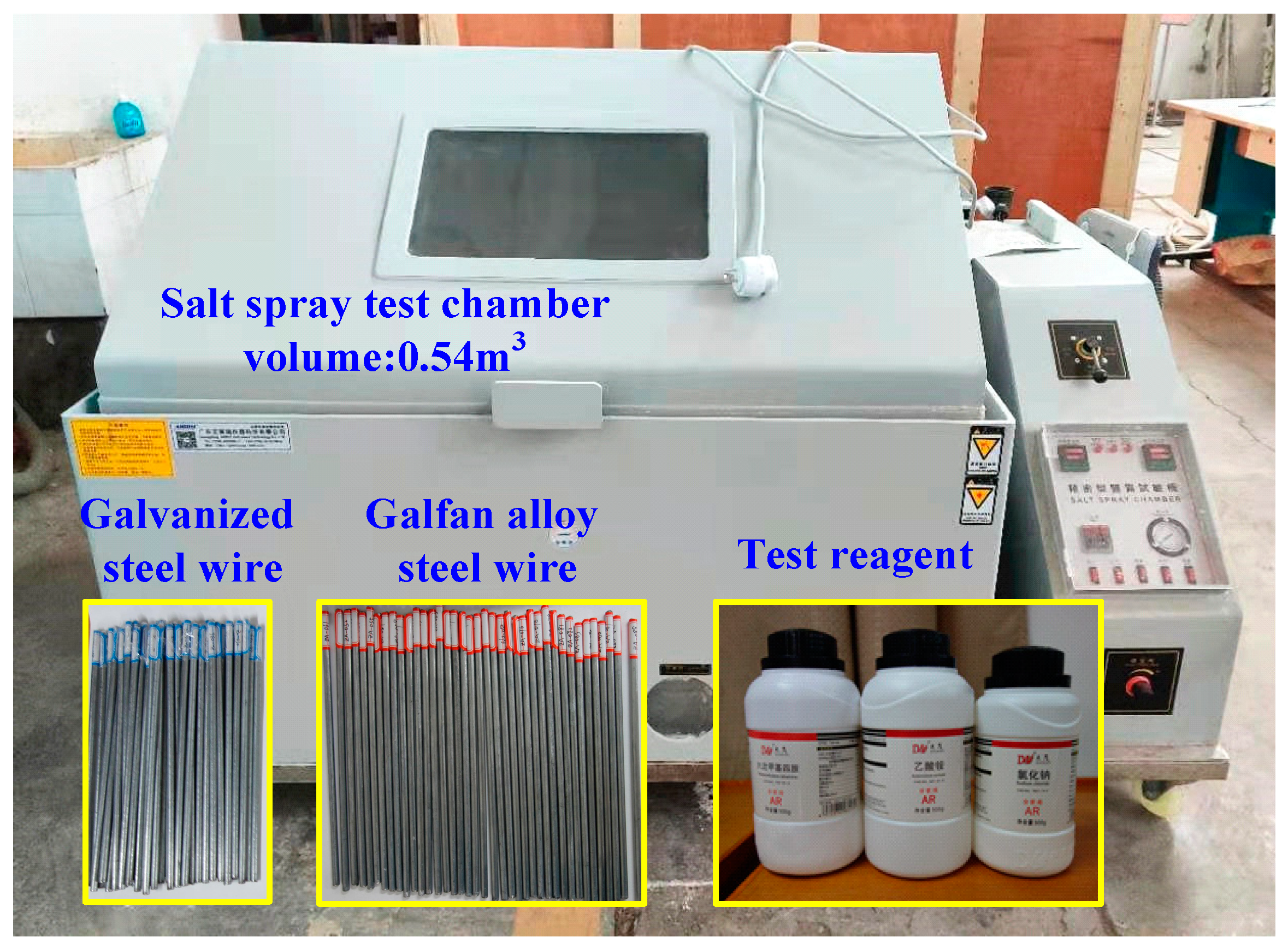
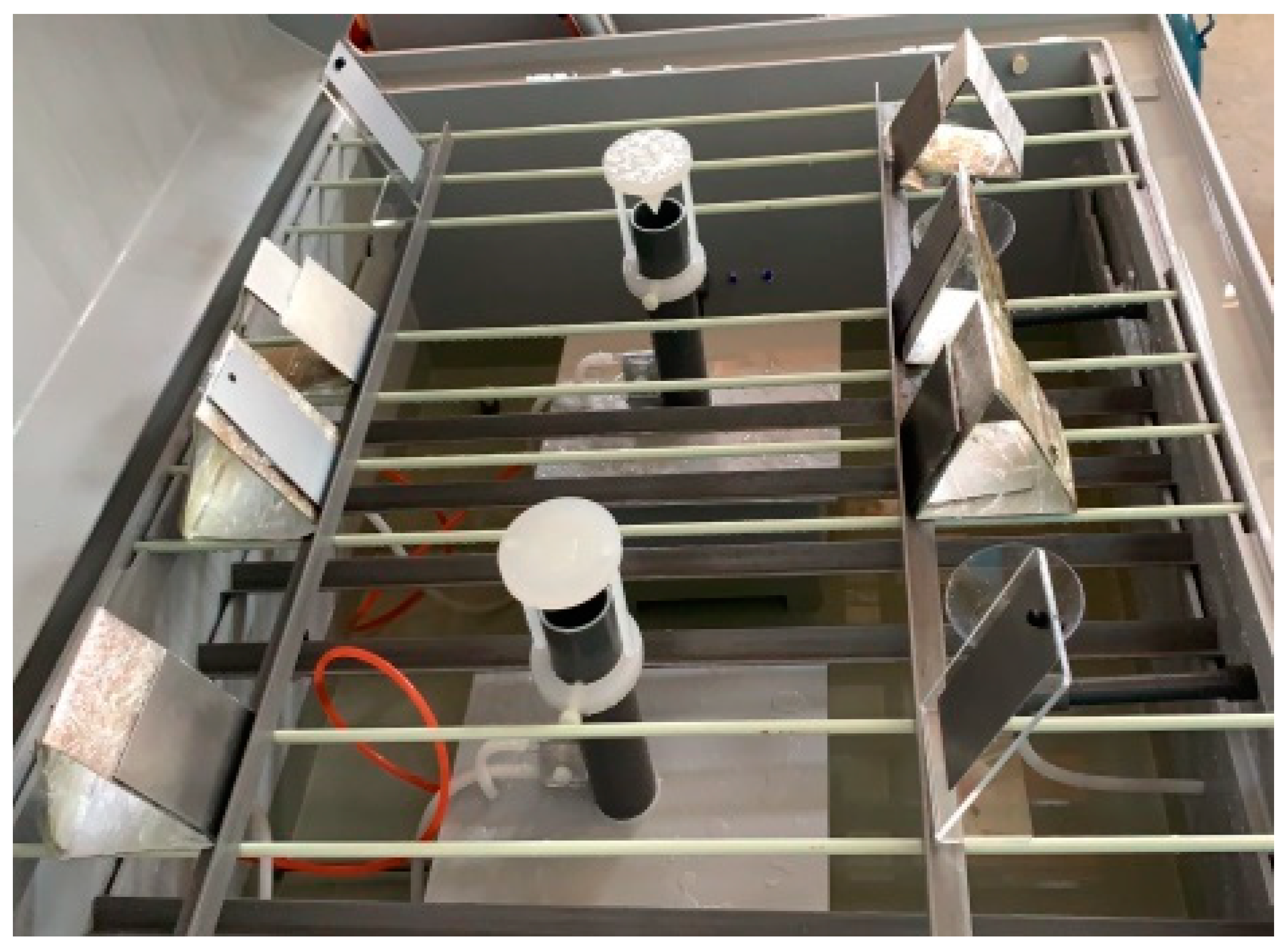
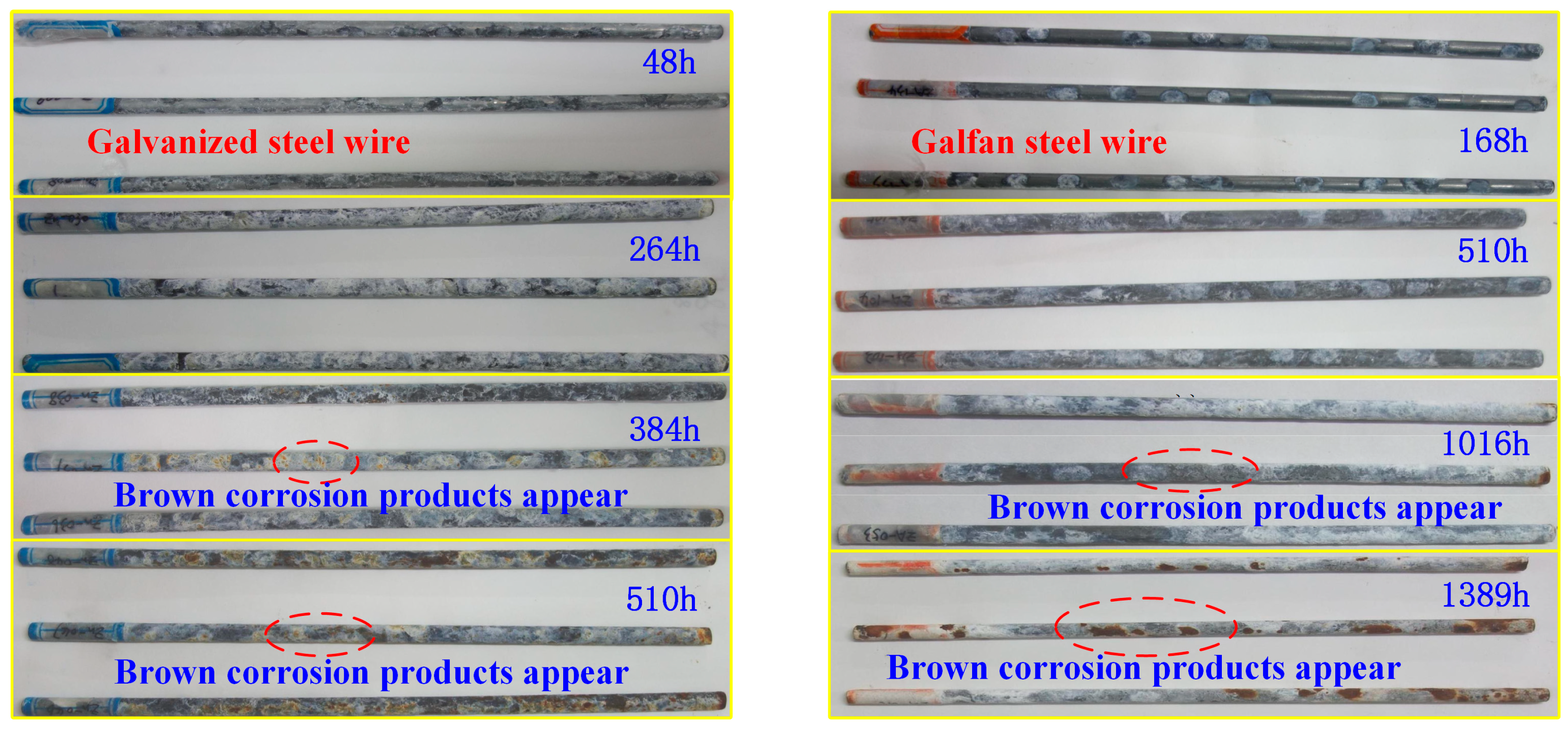
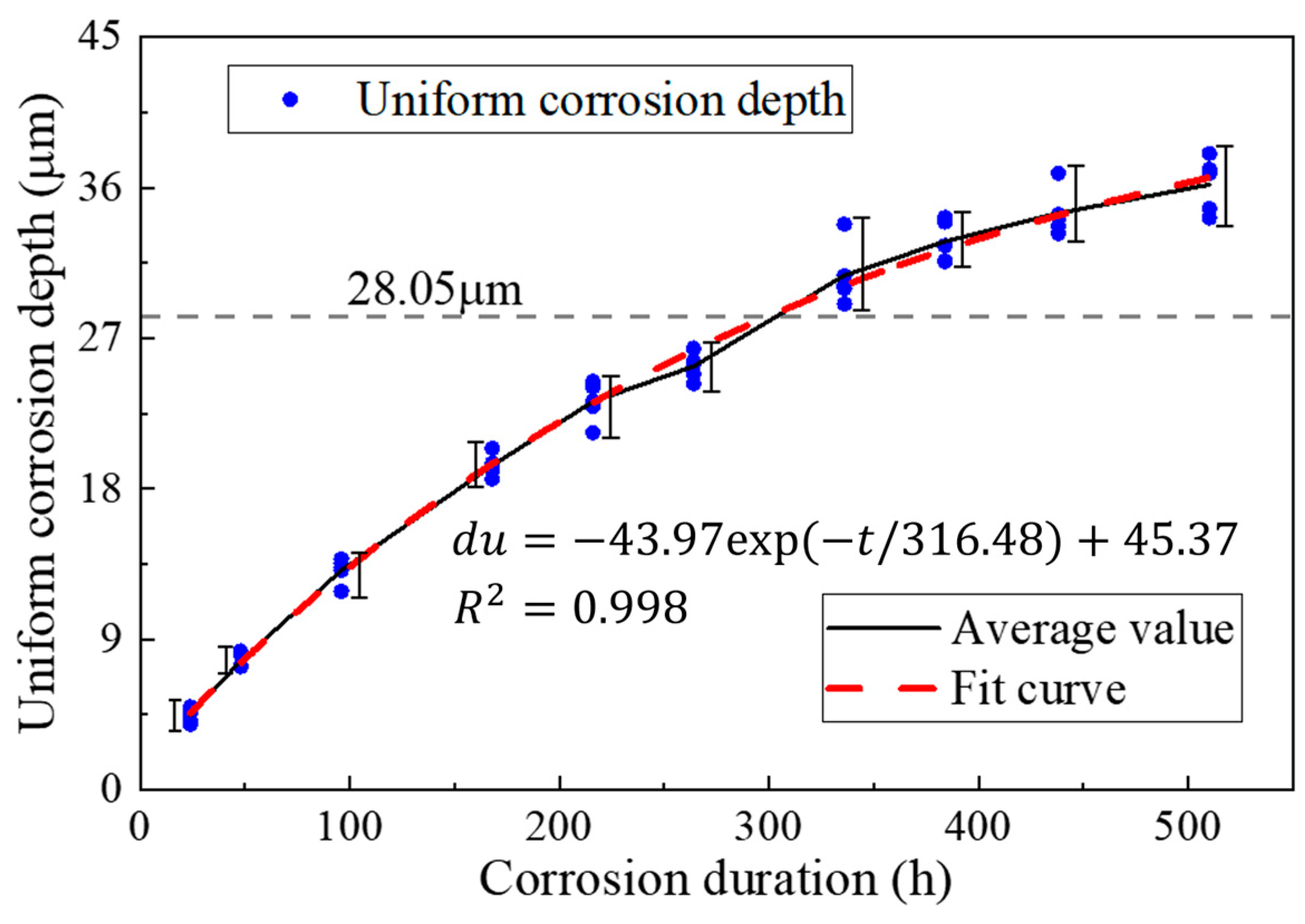
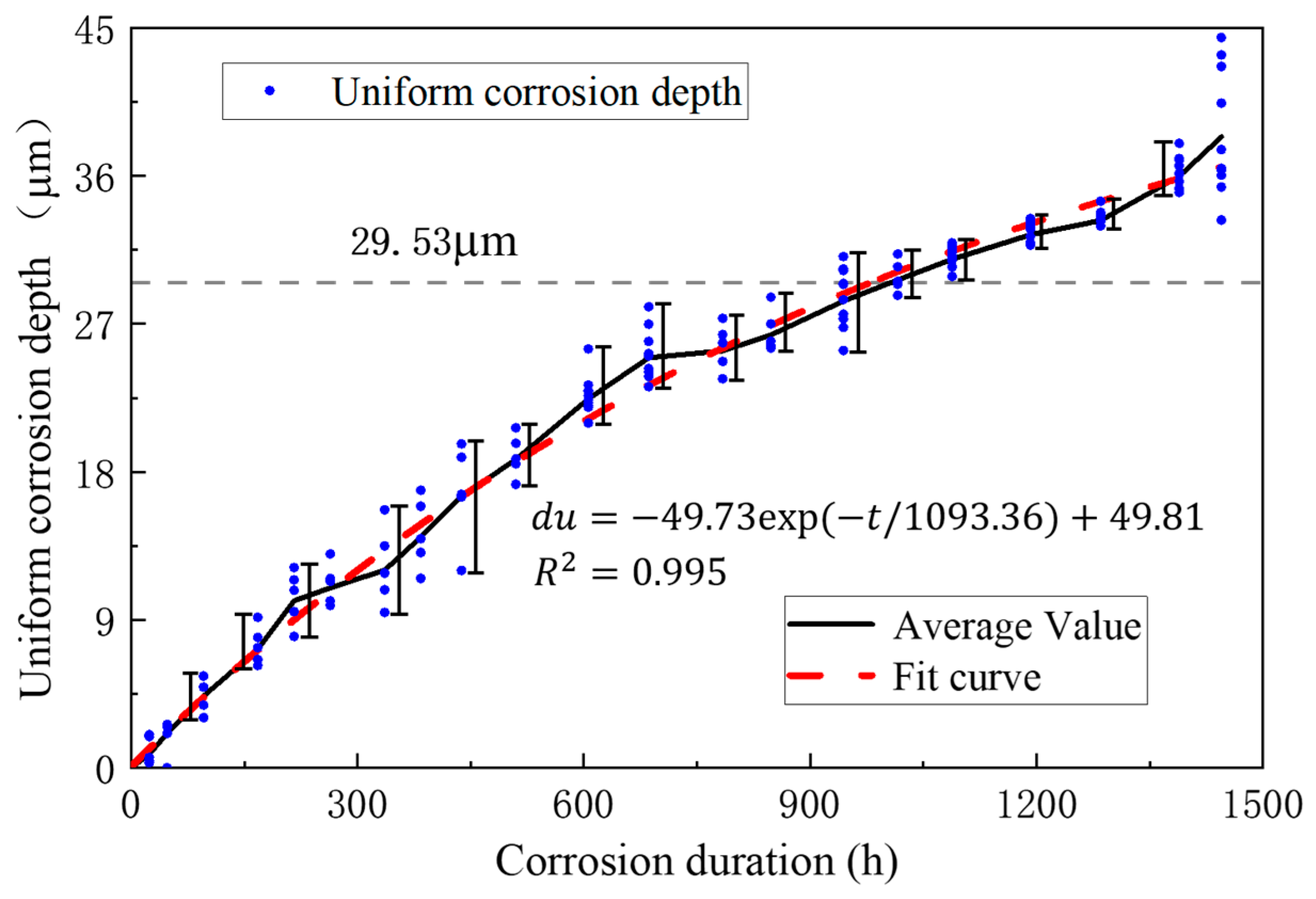
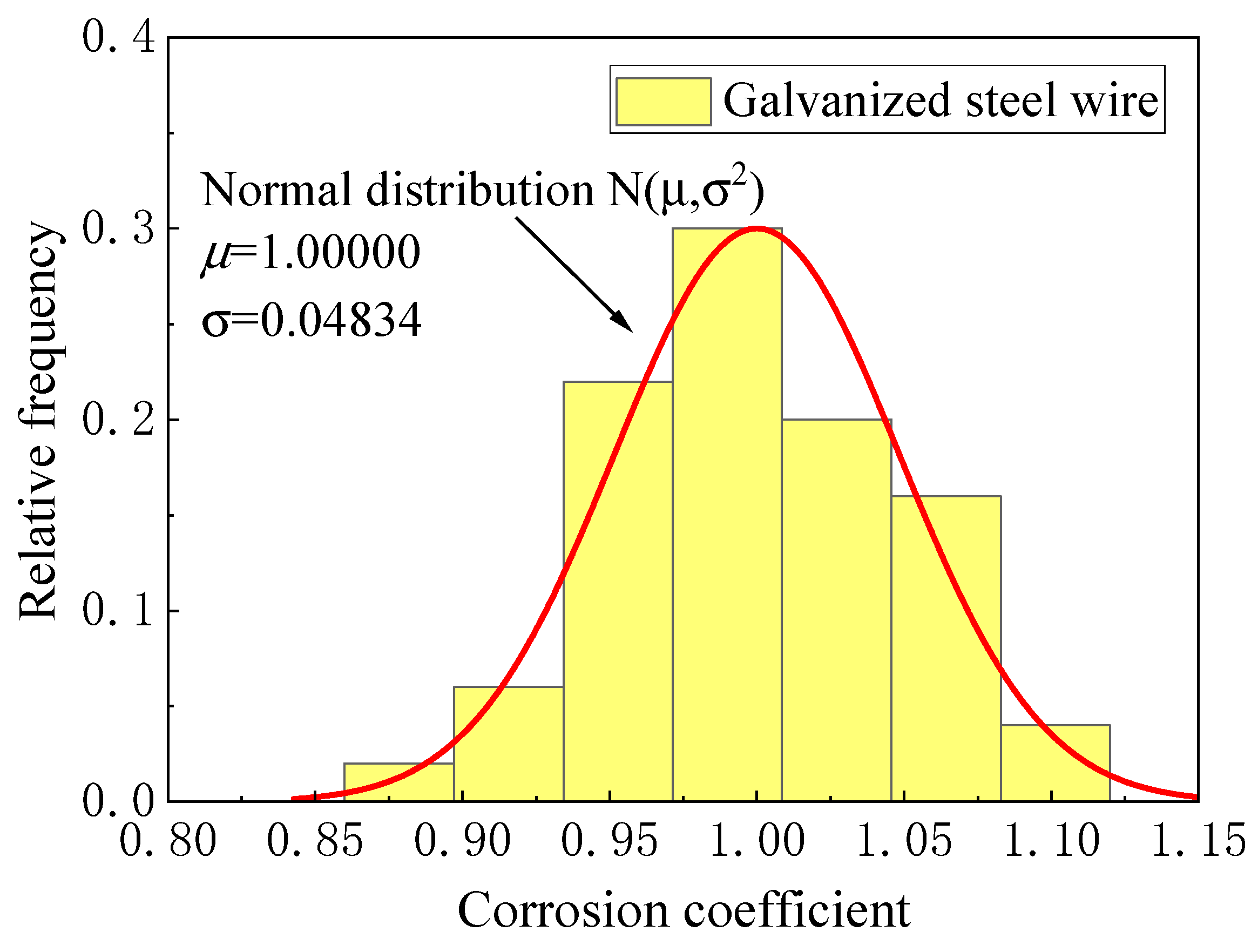
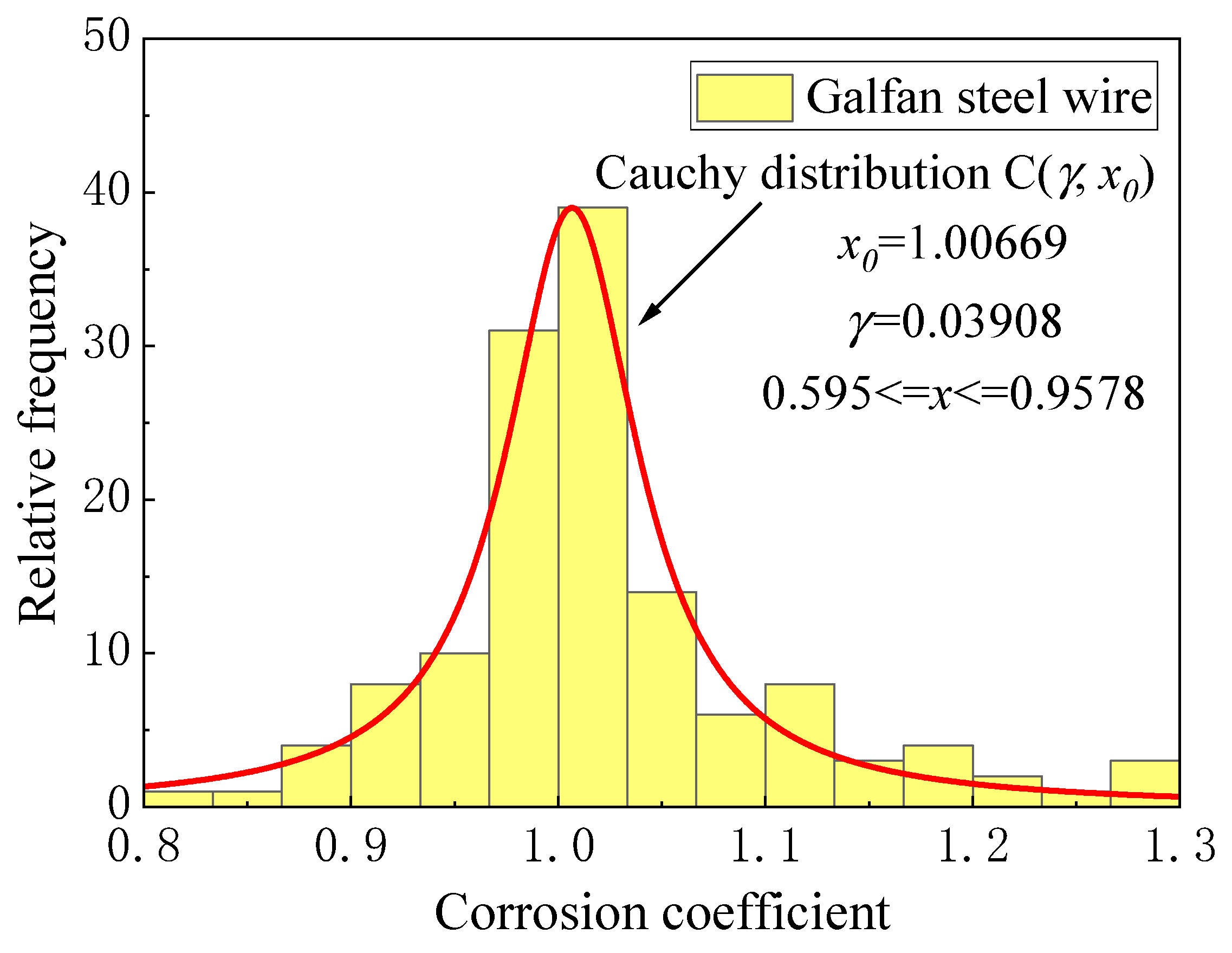



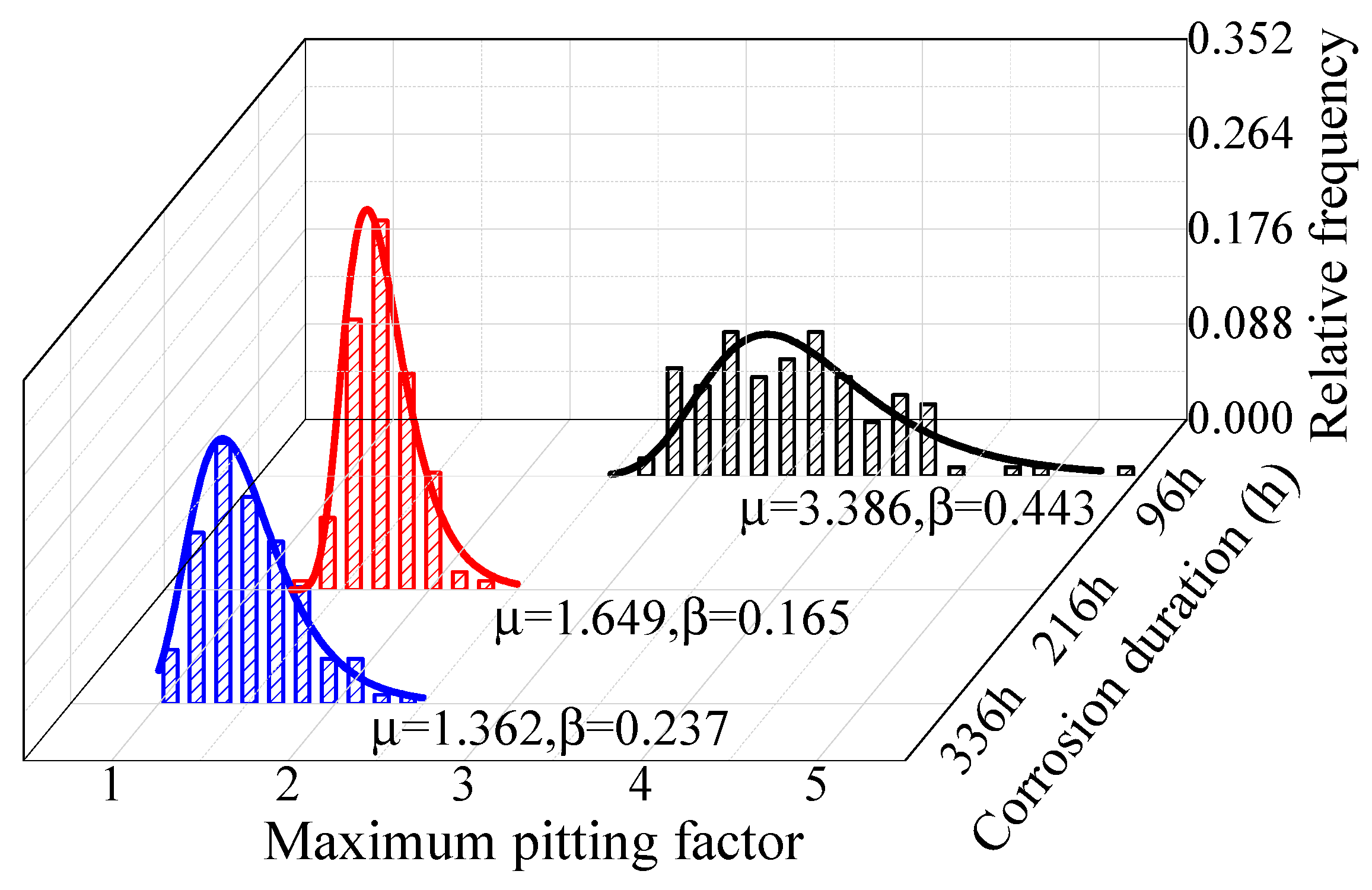





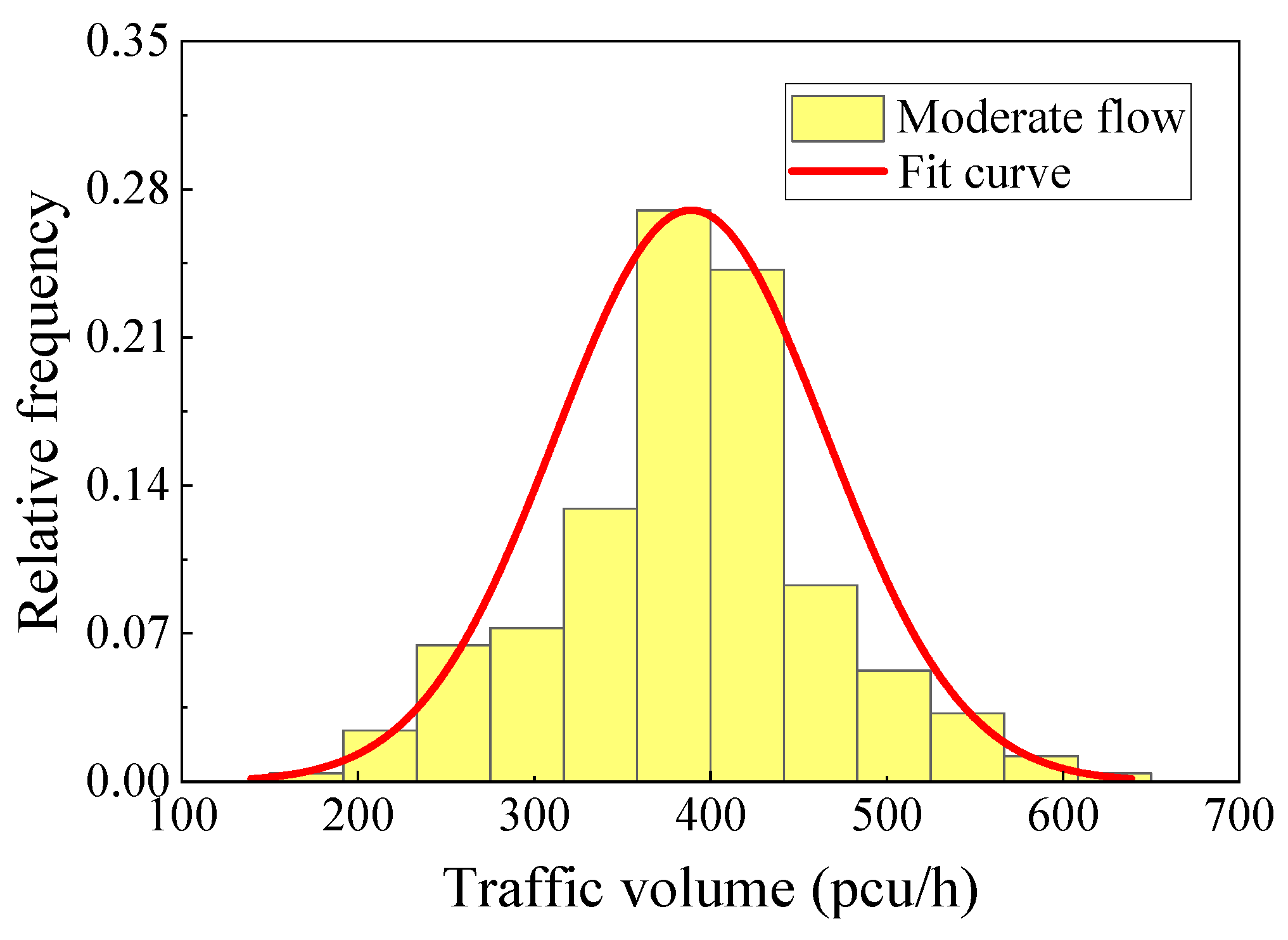

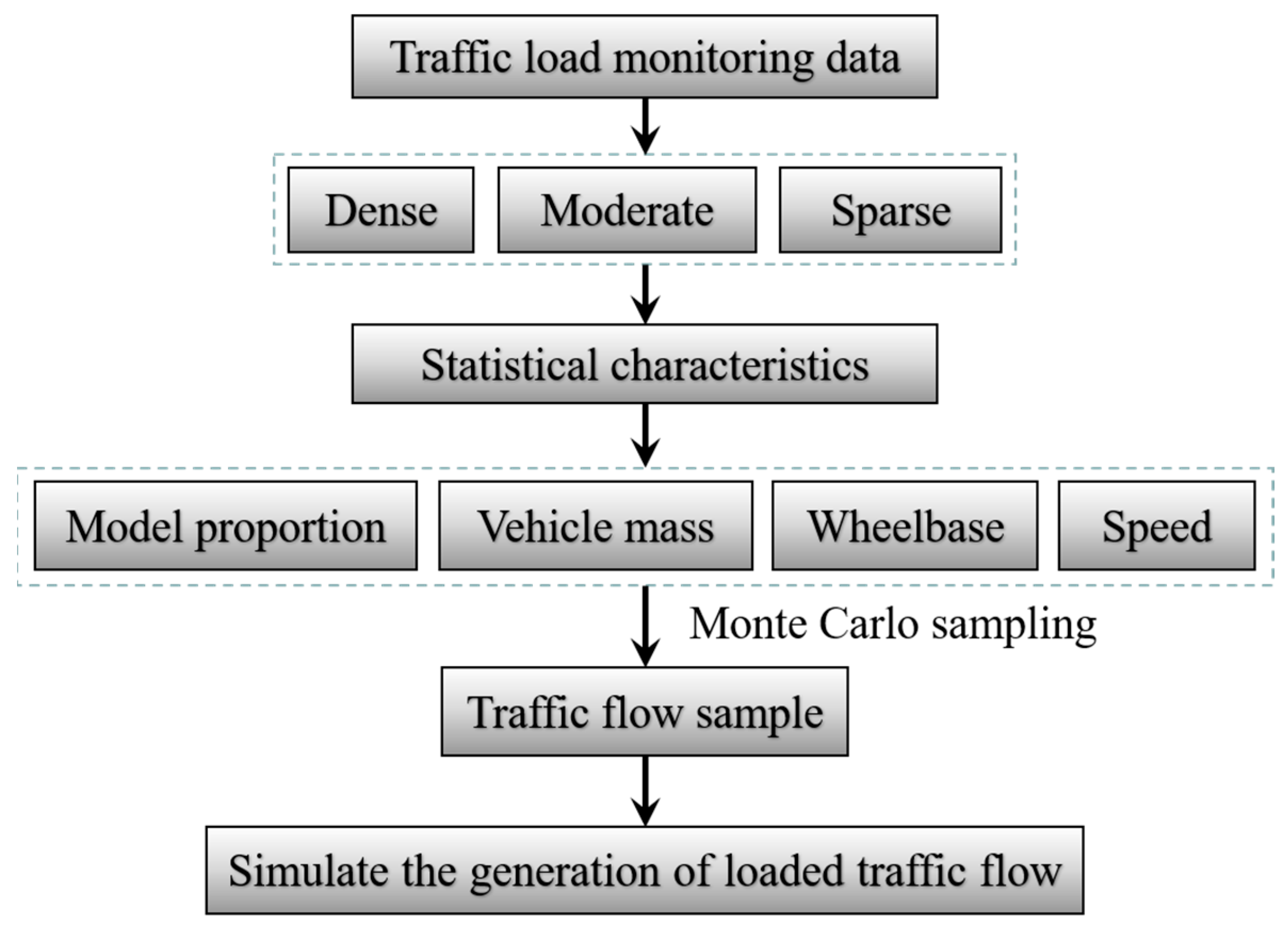
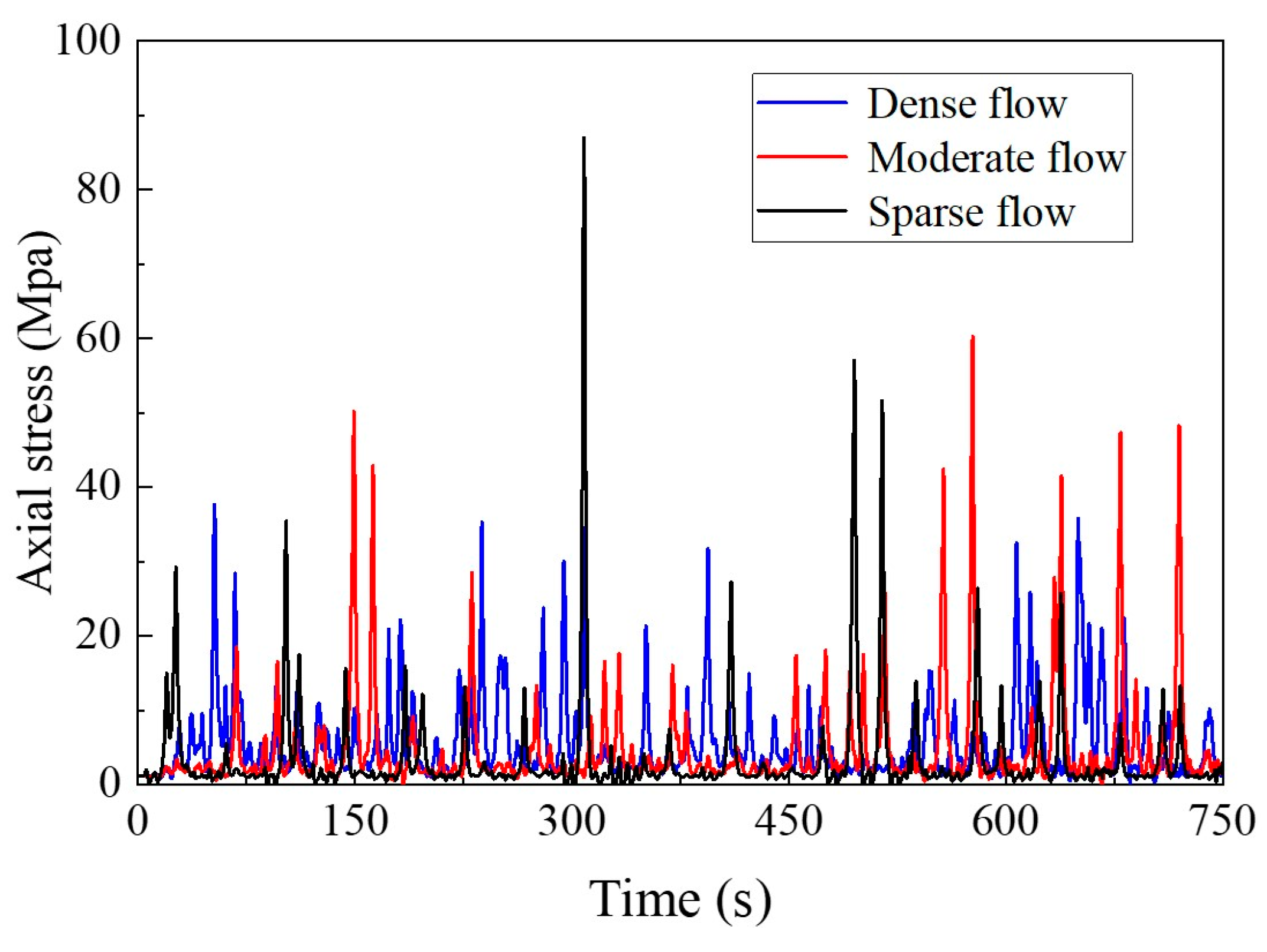
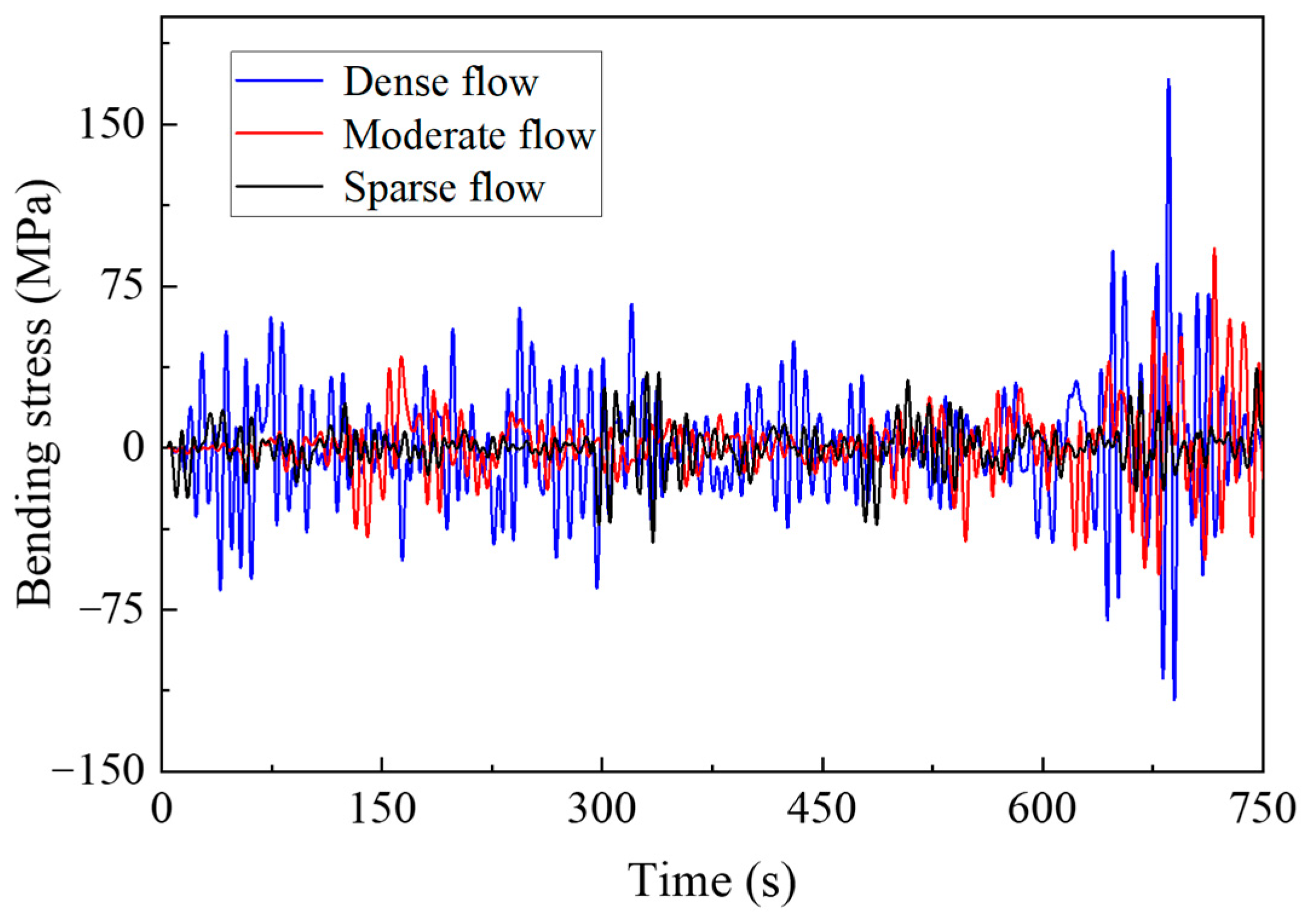
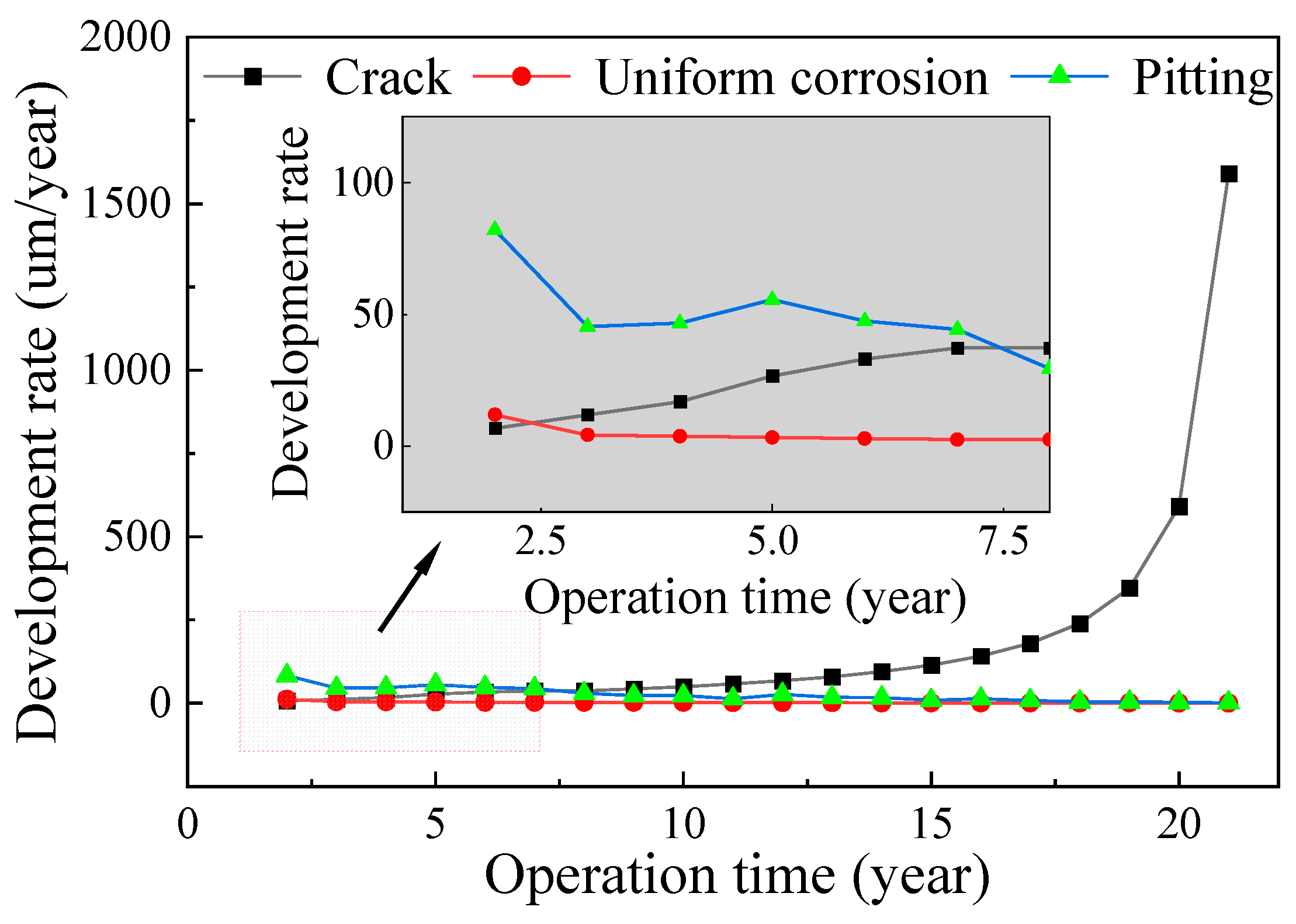
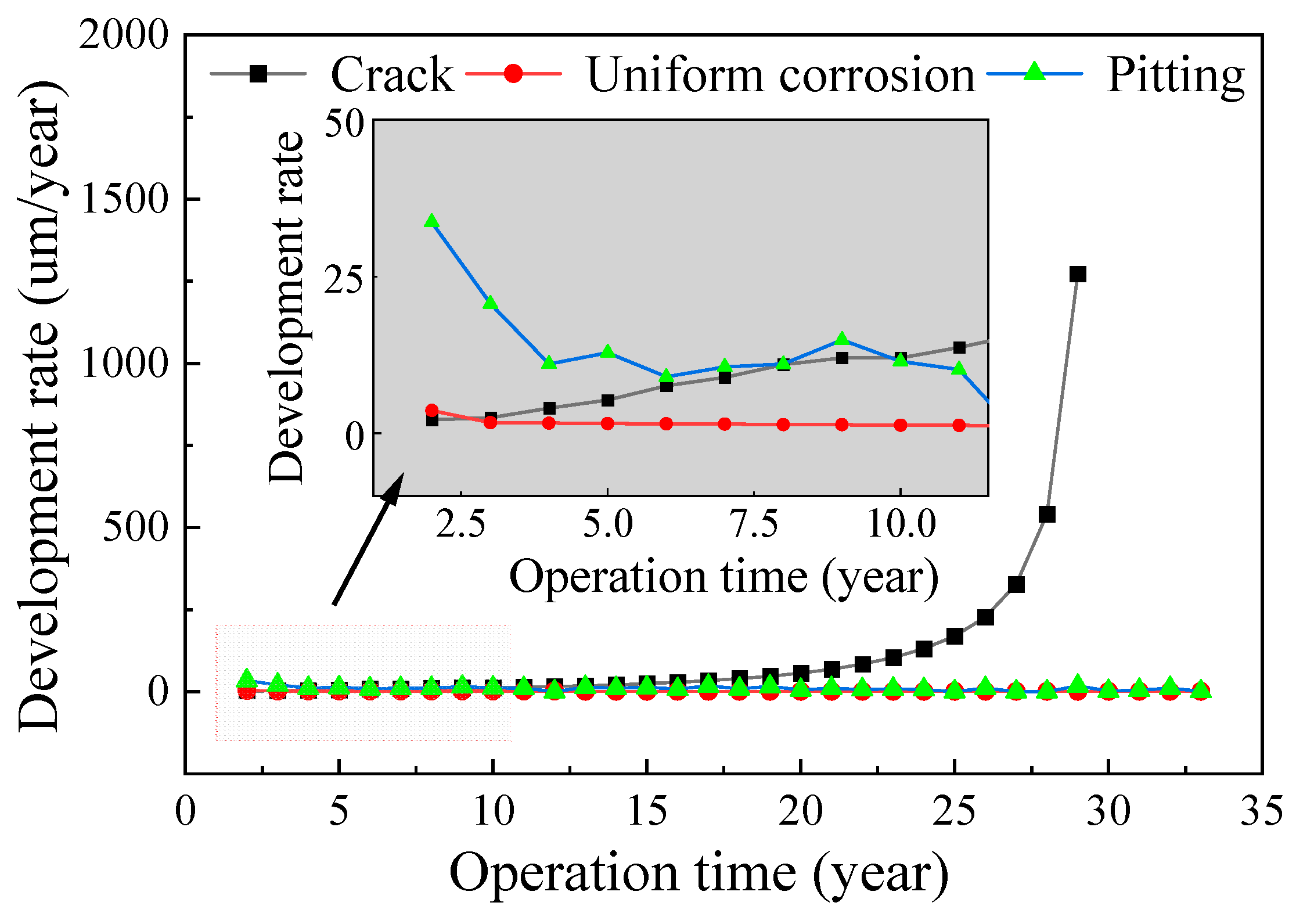
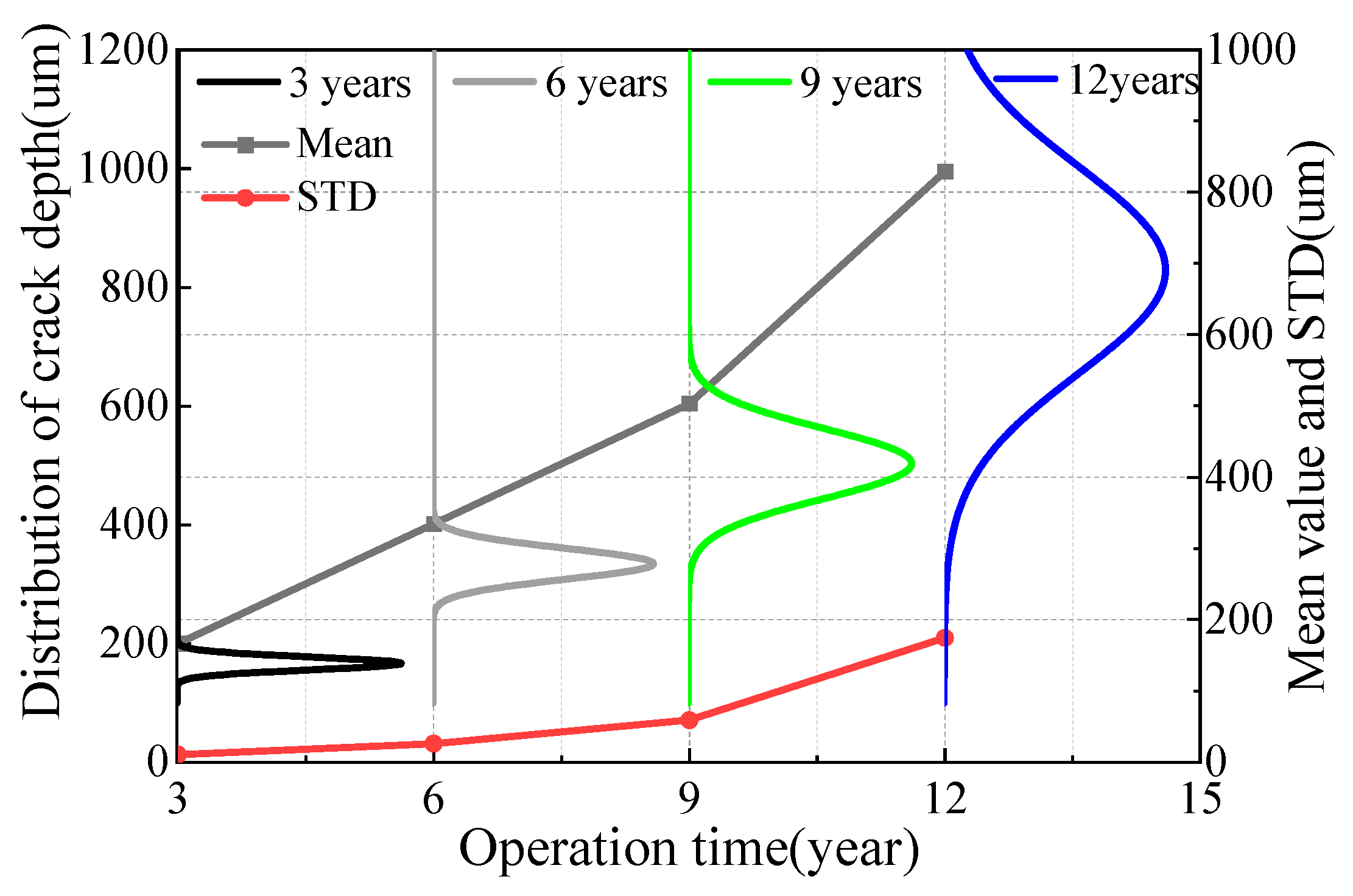


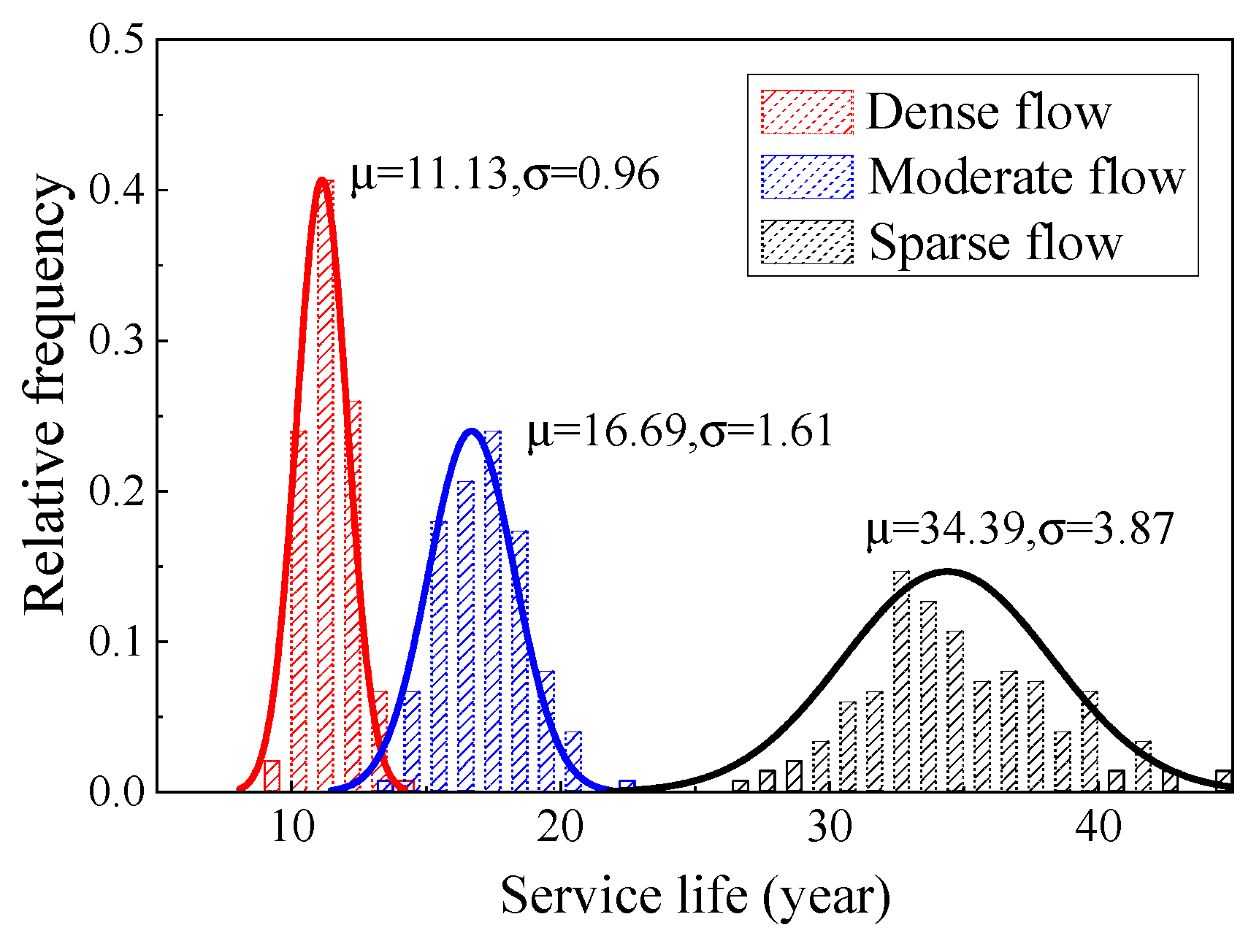
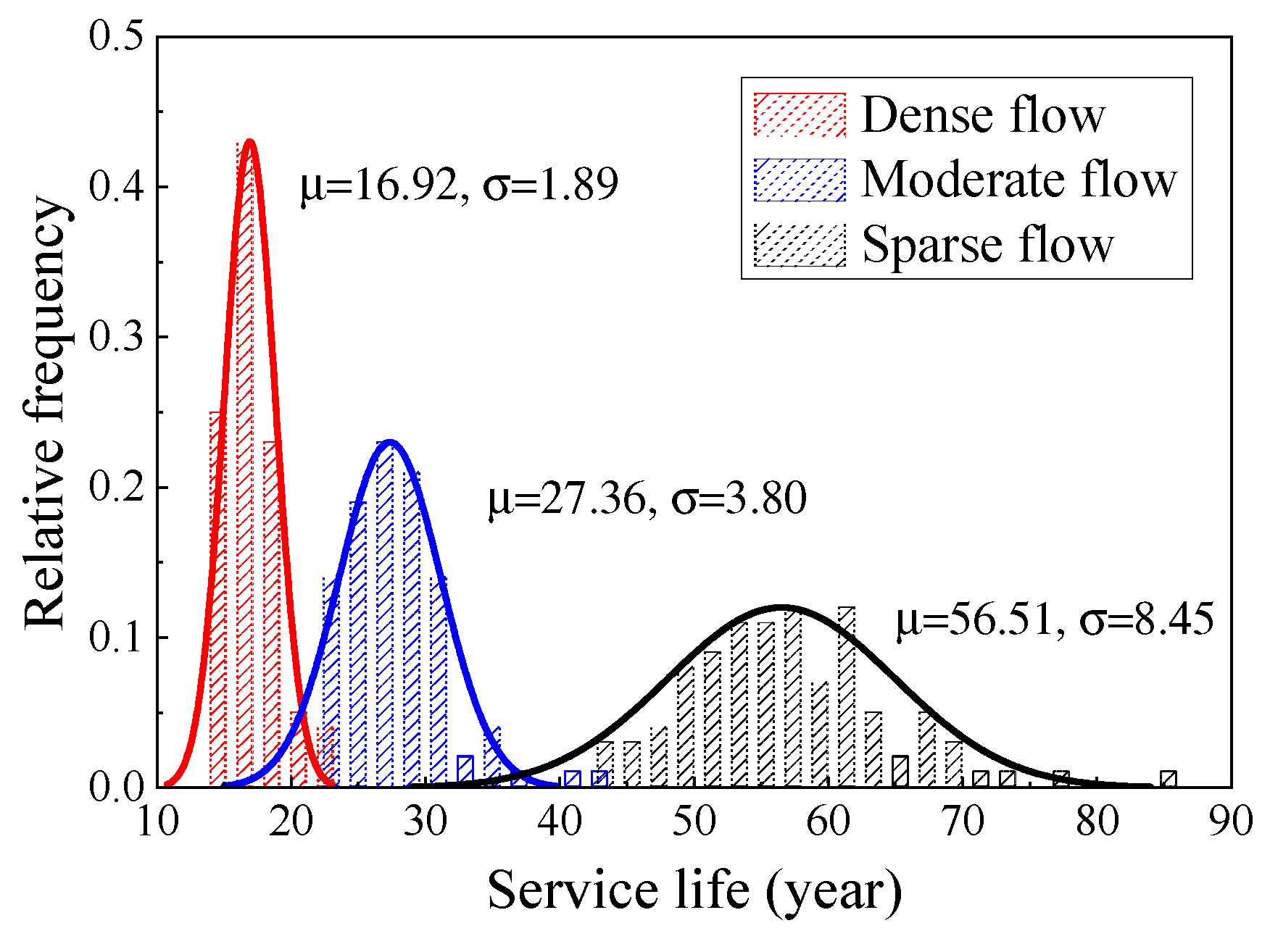
| Galvanized Steel Wire | Galfan Steel Wire | ||||
|---|---|---|---|---|---|
| Corrosion Duration (h) | Amount of Test Pieces | Corrosion Duration (h) | Amount of Test Pieces | Corrosion Duration (h) | Amount of Test Pieces |
| 24 | 5 | 24 | 5 | 606 | 10 |
| 48 | 5 | 48 | 5 | 686 | 10 |
| 96 | 5 | 96 | 5 | 784 | 10 |
| 168 | 5 | 168 | 5 | 848 | 10 |
| 216 | 5 | 216 | 5 | 944 | 10 |
| 264 | 5 | 264 | 5 | 1016 | 10 |
| 336 | 5 | 336 | 5 | 1088 | 10 |
| 384 | 5 | 384 | 5 | 1192 | 10 |
| 438 | 5 | 438 | 5 | 1389 | 10 |
| 510 | 5 | 510 | 5 | 1445 | 10 |
| Type of Steel Wire | Diameter (mm) | Out of Roundness | Tensile Strength (MPa) | Yield Strength (MPa) | Elastic Modulus (MPa) | Coating Quality (g/m2) |
|---|---|---|---|---|---|---|
| Galvanized steel wire | 5.34 | 0 | 1895 | 1760 | 2.08 × 105 | 336 |
| Galfan steel wire | 5.25 | 0 | 1926 | 1775 | 2.08 × 105 | 337 |
| Material Composition | Zn | Al | Si | Mn | P | S | Cr |
|---|---|---|---|---|---|---|---|
| Galvanized Coating | ≥99 | / | / | / | / | / | / |
| Galfan Coating | ≤95 | ≤5 | 0.24 | 0.86 | 0.009 | 0.002 | 0.17 |
| Instrument Name | Electronic Balance | C2H5OH | NaCl | Pickling Agent |
|---|---|---|---|---|
| Parameter grade | 0.0001 g | Analytically pure | Analytically pure | Analytically pure |
| Internal Dimensions (mm) | Test Room Temperature (°C) | Pressure Barrel Temperature (°C) | Compressed Air Force (kgf/cm2) |
|---|---|---|---|
| 1200 × 1000 × 500 | NSS ACSS 35 ± 1 CASS 50 ± 1 | NSS ACSS 47 ± 1 CASS 63 ± 1 | 1.00 ± 0.01 |
| Specimen Number | Specimen 1 | Specimen 2 | Specimen 3 | Specimen 4 |
|---|---|---|---|---|
| Mass loss (g/m2) | 75 | 78 | 77 | 80 |
| Key Parameter | Passing Lane | Carriage-Way | Slow Lane | |
|---|---|---|---|---|
| Dense flow | Traffic volume (pcu/h) | 572 | 474 | 209 |
| Traffic speed (km/h) | 93.36 | 88.4 | 70.76 | |
| Moderate flow | Traffic volume (pcu/h) | 451 | 378 | 184 |
| Traffic speed (km/h) | 94.12 | 87.48 | 67.98 | |
| Sparse flow | Traffic volume (pcu/h) | 175 | 186 | 132 |
| Traffic speed (km/h) | 92.12 | 81.80 | 67.98 | |
Disclaimer/Publisher’s Note: The statements, opinions and data contained in all publications are solely those of the individual author(s) and contributor(s) and not of MDPI and/or the editor(s). MDPI and/or the editor(s) disclaim responsibility for any injury to people or property resulting from any ideas, methods, instructions or products referred to in the content. |
© 2023 by the authors. Licensee MDPI, Basel, Switzerland. This article is an open access article distributed under the terms and conditions of the Creative Commons Attribution (CC BY) license (https://creativecommons.org/licenses/by/4.0/).
Share and Cite
Zhao, Y.; Su, B.; Fan, X.; Yuan, Y.; Zhu, Y. Corrosion Fatigue Degradation Characteristics of Galvanized and Galfan High-Strength Steel Wire. Materials 2023, 16, 708. https://doi.org/10.3390/ma16020708
Zhao Y, Su B, Fan X, Yuan Y, Zhu Y. Corrosion Fatigue Degradation Characteristics of Galvanized and Galfan High-Strength Steel Wire. Materials. 2023; 16(2):708. https://doi.org/10.3390/ma16020708
Chicago/Turabian StyleZhao, Yue, Botong Su, Xiaobo Fan, Yangguang Yuan, and Yiyun Zhu. 2023. "Corrosion Fatigue Degradation Characteristics of Galvanized and Galfan High-Strength Steel Wire" Materials 16, no. 2: 708. https://doi.org/10.3390/ma16020708





